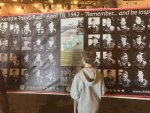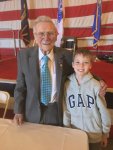https://en.wikipedia.org/wiki/Doolittle_Raid



After
Japan's sneak attack on Pearl Harbor, with the United States
reeling and wounded, something dramatic was needed to turn the war effort around.
Even though there were no friendly airfields close enough to Japan for the United States to launch a retaliation, a daring plan was devised. Sixteen B-25swere modified so that they could take off from the deck of an aircraft carrier. This had never before been tried -- sending such big, heavy bombers from a carrier.


The 16 five-man crews, under the command of Lt. Col. James Doolittle, who himself flew the lead plane off the USS Hornet, knew that they would not be able to return to the carrier.
They would have to hit Japan and then hope to make it to China for a safe landing.

Last edited:
















